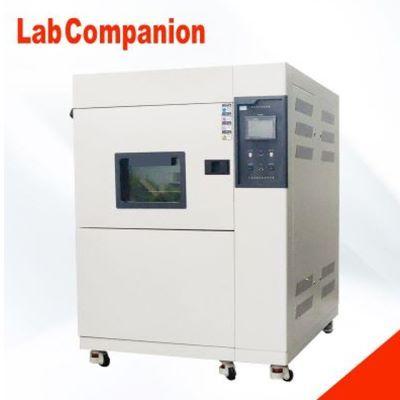Email Us :
labcompanion@outlook.com-

-

Requesting a Call :
+86 18688888286
Temperature Cyclic Stress Screening (2)
Introduction of stress parameters for temperature cyclic stress screening:
The stress parameters of temperature cyclic stress screening mainly include the following: high and low temperature extremum range, dwell time, temperature variability, cycle number
High and low temperature extremal range: the larger the range of high and low temperature extremal, the fewer cycles required, the lower the cost, but can not exceed the product can withstand the limit, do not cause new fault principle, the difference between the upper and lower limits of temperature change is not less than 88°C, the typical range of change is -54°C to 55°C.
Dwell time: In addition, the dwell time can not be too short, otherwise it is too late to make the product under test produce thermal expansion and contraction stress changes, as for the dwell time, the dwell time of different products is different, you can refer to the relevant specification requirements.
Number of cycles: As for the number of cycles of temperature cyclic stress screening, it is also determined by considering product characteristics, complexity, upper and lower limits of temperature and screening rate, and the screening number should not be exceeded, otherwise it will cause unnecessary harm to the product and cannot improve the screening rate. The number of temperature cycles ranges from 1 to 10 cycles [ordinary screening, primary screening] to 20 to 60 cycles [precision screening, secondary screening], for the removal of the most likely workmanship defects, about 6 to 10 cycles can be effectively removed, in addition to the effectiveness of the temperature cycle, Mainly depends on the temperature variation of the product surface, rather than the temperature variation inside the test box.
There are seven main influencing parameters of temperature cycle:
(1) Temperature Range
(2) Number of Cycles
(3) Temperature Rate of Chang
(4) Dwell Time
(5) Airflow Velocities
(6) Uniformity of Stress
(7) Function test or not (Product Operating Condition)
Stress screening fatigue classification:
The general classification of Fatigue research can be divided into High-cycle Fatigue, Low-cycle Fatigue and Fatigue Crack Growth. In the aspect of low cycle Fatigue, it can be subdivided into Thermal Fatigue and Isothermal Fatigue.
Stress screening acronyms:
ESS: Environmental stress screening
FBT: Function board tester
ICA: Circuit analyzer
ICT: Circuit tester
LBS: load board short-circuit tester
MTBF: mean time between failures
Time of temperature cycles:
a.MIL-STD-2164(GJB 1302-90) : In the defect removal test, the number of temperature cycles is 10, 12 times, and in the trouble-free detection it is 10 ~ 20 times or 12 ~ 24 times. In order to remove the most likely workmanship defects, about 6 ~ 10 cycles are needed to effectively remove them. 1 ~ 10 cycles [general screening, primary screening], 20 ~ 60 cycles [precision screening, secondary screening].
B.od-hdbk-344 (GJB/DZ34) Initial screening equipment and unit level uses 10 to 20 loops (usually ≧10), component level uses 20 to 40 loops (usually ≧25).
Temperature variability:
a.MIL-STD-2164(GJB1032) clearly states: [Temperature change rate of temperature cycle 5℃/min]
B.od-hdbk-344 (GJB/DZ34) Component level 15 ° C /min, system 5 ° C /min
c. Temperature cyclic stress screening is generally not specified temperature variability, and its commonly used degree variation rate is usually 5°C/min
